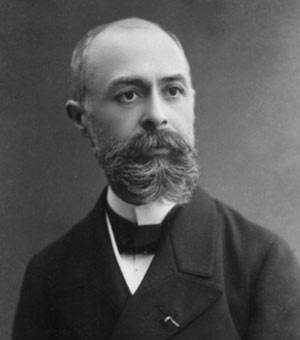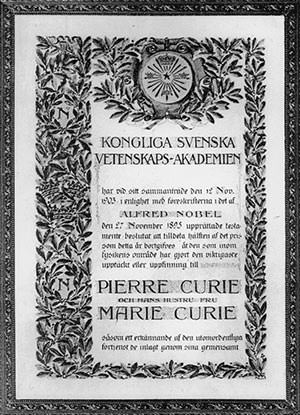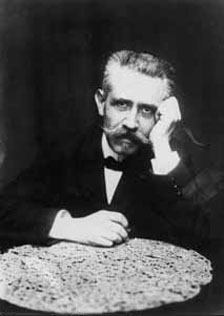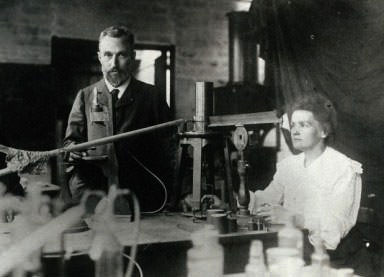Pioneer in the field of radioactivity, Marie Curie was a Polish scientist, who is known all over the world as the first woman to win a Nobel Prize. Know more about her life and achievements through these 10 interesting facts.
#1 MARIE CURIE WAS AN AGNOSTIC
Maria Sklodowska, better known as Marie Curie, was born on November 7, 1867 in Warsaw in modern day Poland. Marie was the youngest of five children born to well-known teachers Bronislawa and Wladyslaw Sklodowski. While her father Wladyslaw was an atheist, her mother Bronislawa was a devout catholic. When Marie was nine years old, her oldest sibling died of typhus. Two years later she lost her mother to tuberculosis. These incidents made Marie give up Catholicism and she became an agnostic, a person who believes that the existence of God is unknowable.

#2 SHE DID PART-TIME WORK WHILE COMPLETING HER EDUCATION
Marie was not allowed to enroll in a higher education institute in Russia occupied Warsaw because she was a female. So Marie and her sister Bronya continued their education in the Flying University, a clandestine pro Polish institution in defiance of Russian authority. Later both Marie and Bronya wanted to go abroad to earn an official degree but they couldn’t afford it. So they made a pact that Marie would give financial assistance to Bronya during her medical studies in Paris and Bronya would return the favour when she completed her course. In connection to this, Marie worked as a tutor and governess for roughly five years, all the while sparing time to educate herself in physics, chemistry and mathematics.

#3 DUE TO SHORTAGE OF MONEY, SHE OCCASIONALLY FAINTED FROM HUNGER
In 1891, Marie moved to Paris and enrolled in Sorbonne (the University of Paris) to pursue her studies of physics, chemistry and mathematics. She studied during the day and gave tuitions in the evening. With little money she survived on buttered bread and tea and occasionally she fainted from hunger. In 1893, Marie was awarded a degree in Physics and the following year she earned another degree in mathematics.
#4 She Met Her Husband While LOOKING FOR LARGER LABORATORY SPACE
In mid 1890s Marie began her scientific career and was looking for larger laboratory space. Professor Jozef Wierusz-Kowalski introduced Marie to Pierre Curie as he thought that Pierre had such a space. Though he did not have a large laboratory, Pierre was able to find some space for Marie to begin her work. Their mutual interest in science drew Maria and Pierre closer and a romance ensued. In July 1895, Maria married Pierre Curie in a civil union as they didn’t want a religious service. Marie’s dark blue outfit, worn instead of a bridal grown, would serve her for many years as a lab outfit.
#5 MARIE CURIE PROVED THAT ATOMS WERE DIVISIBLE
After French physicist Henri Becquerel first discovered a strange source of energy coming from uranium that resembled X-rays in their penetrating power, Marie Curie decided that this would make a good field for research. During her research Marie made several scientific discoveries. She came to know that the activity of uranium depended only on the quantity of uranium present and that radiation did indeed come from the atom itself rather than an interaction between molecules. This disproved the ancient assumption that atoms were indivisible; and led to the creation of atomic physics.

#6 THE CURIES COINED THE WORD RADIOACTIVITY
In 1898 Marie Curie discovered that thorium was also radioactive but she was beaten in the race to tell her discovery by Gerhard Schmidt, who published it two months earlier. In the same year Pierre Curie decided that he would join Marie in her work. In July 1898, they published a paper together announcing the existence of an element which they named “polonium”, in honour of her native country Poland. In December, the Curies announced the existence of a second element, which they named “radium” from the Latin word for ray. In their research they also coined the word radioactivity.
#7 She Became The First Woman To Win A Nobel Prize In 1903
In December 1903, Marie Curie became the first women to be awarded the Nobel Prize, when along with her husband and Henri Becquerel, she was awarded the Nobel Prize in Physics “in recognition of the extraordinary services they have rendered by their joint researches on the radiation phenomena discovered by Professor Henri Becquerel.” Initially the Committee didn’t want to recognize the contribution of Marie Curie but her husband was informed of this by a committee member, who was also an advocate of women scientists. Upon a complaint by Pierre, his wife’s name was added to the nomination. The award money allowed the Curies to hire their first lab assistant.

#8 She IS THE ONLY PERSON TO WIN NOBEL PRIZES IN MULTIPLE SCIENCES
On 19 April 1906, Pierre Curie was killed in Paris after he accidentally stepped in front of a horse-drawn wagon. Although she was devastated, Marie took over his teaching post at the Sorbonne, becoming the institution’s first female professor. In 1910, Marie succeeded in isolating radium and she also defined an international standard for radioactive emissions that was eventually named after her and Pierre: the curie. A year later, Marie was awarded a second Nobel Prize, this time for Chemistry “in recognition of her services to the advancement of chemistry by the discovery of the elements radium and polonium, by the isolation of radium and the study of the nature and compounds of this remarkable element.” She became the first person to win or share two Nobel Prizes and remains the only person who has won it in multiple sciences. She is also the only women and one of only two people to win a Nobel Prize in two different fields.
#9 SHE HAD AN AFFAIR WITH A FORMER STUDENT OF PIERRE
In 1911, the same year that she created history by becoming the first person to win two Nobel Prizes, Marie was also rocked by a scandal. It was found out that in 1910–11 Marie had conducted an affair of about a year’s duration with physicist Paul Langevin, a former student of Pierre’s. He was married but was estranged from his wife. The press portrayed Marie as a foreign Jewish home-wrecker. Curie was in Belgium when the scandal broke and she found an angry mob in front of her house upon her return. Marie had to seek refuge with her daughters at a house of a friend. Years later, Curie’s granddaughter, Helene Joliot, married Langevin’s grandson, Michel Langevin.

#10 MARIE CURIE DIED BECAUSE OF HER WORK
In 1934, Curie went to the Sancellemoz Sanatorium in Passy, France, to try to rest and regain her strength. She died there on July 4, 1934, of aplastic anemia, which can be caused by prolonged exposure to radiation. The damaging effects of ionising radiation were not known at the time of her work, which had been carried out without the safety measures later developed. She had carried test tubes containing radioactive isotopes in her pocket and stored them in her desk drawer. Because of their levels of radioactivity, her papers from the 1890s are considered too dangerous to handle. They are kept in lead-lined boxes, and those who wish to consult them must wear protective clothing.



I have read a great deal about Marie Curie, and must disagree with the notion in point #10 that the “damaging effects of radiation were not known at the time.” They were known, and had been known almost from the start of the Rontgen – Becquerel – Curie story. I cannot say why Marie and Pierre Curie were so nonchalant in protecting themselves, but I can say that they seem to have taken many chances. My guess is Marie just thought “protecting” herself was too much trouble, she had work to do.
i like this song i mean passege
THANKS FOR THE INFO!!!!!!!!!!!!!!!!! it helped so much on my wax museum .w.